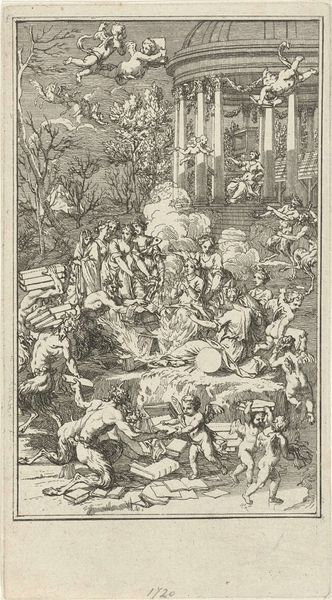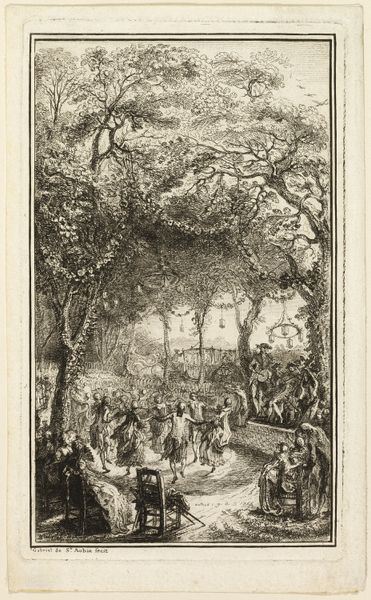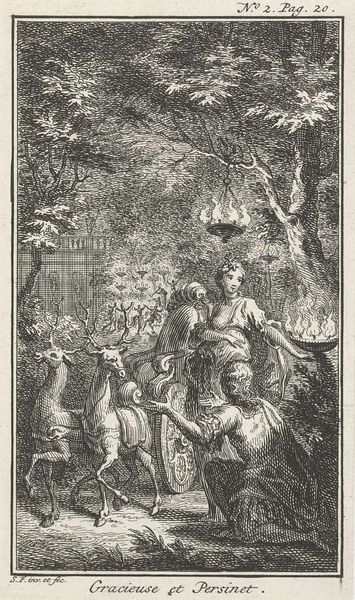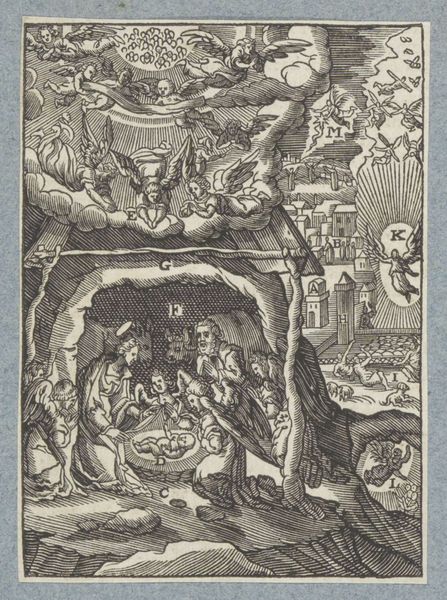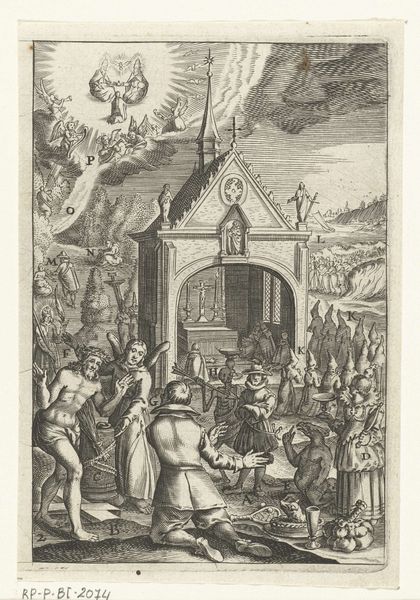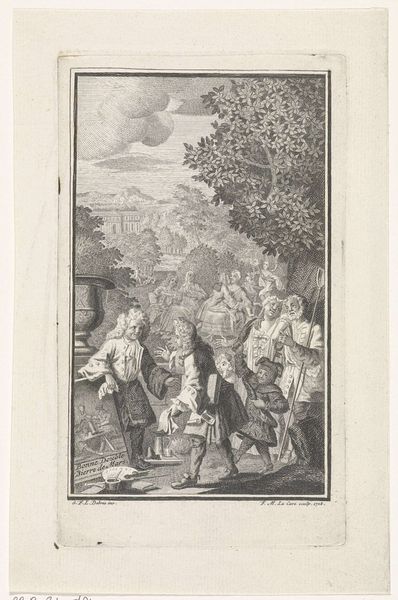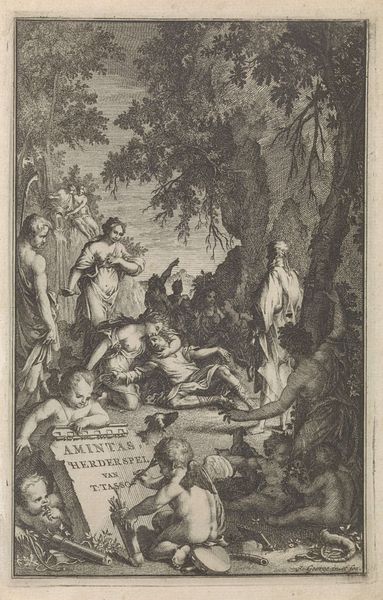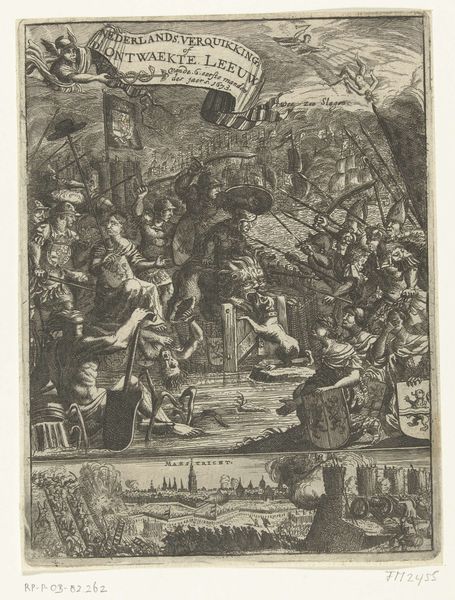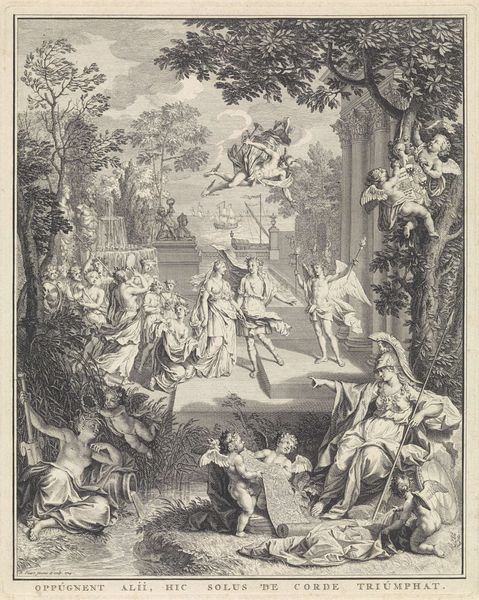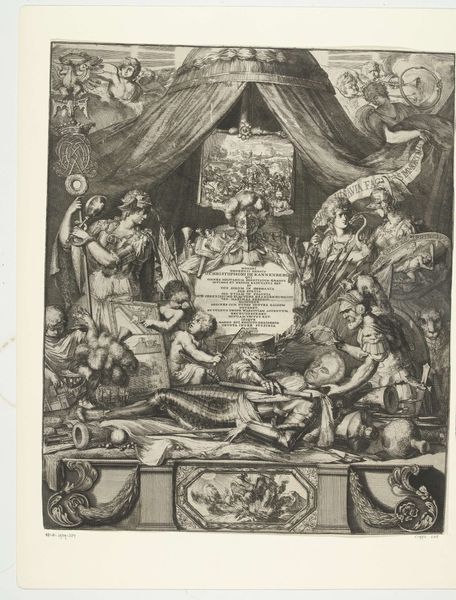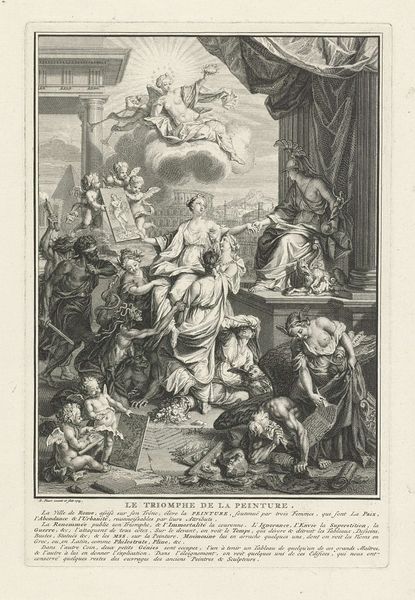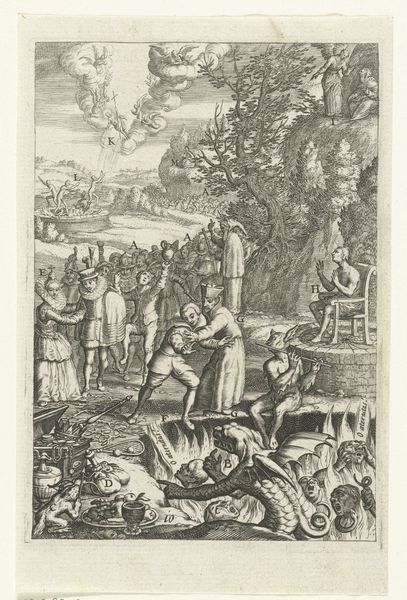
Allegorische voorstelling met de muzen die zich verwarmen aan het vuur van slechte boeken 1720
0:00
0:00
bernardpicart
Rijksmuseum
engraving
#
allegory
#
baroque
#
pen drawing
#
old engraving style
#
figuration
#
line
#
history-painting
#
academic-art
#
engraving
Dimensions: height 144 mm, width 83 mm
Copyright: Rijks Museum: Open Domain
Editor: So, this is "Allegorische voorstelling met de muzen die zich verwarmen aan het vuur van slechte boeken" from 1720, an engraving by Bernard Picart, currently at the Rijksmuseum. It feels quite chaotic at first glance – lots of figures and details competing for attention. What's your interpretation of this scene? Curator: Indeed, chaos, but of a very specific kind. Notice the muses clustered around the fire. What are they burning? Editor: Books, it seems, right? There are figures hauling piles of them to the blaze. Curator: Exactly. And the presence of the temple dedicated to "Immortality" above—how does the act of destruction relate to the promise of lasting fame? Think of symbols and what fire represents beyond destruction. Editor: Is it that only by purging bad art – those terrible books – can true art, worthy of immortality, emerge? Almost like a ritual cleansing? I see winged cherubs and horned satyrs. That suggests a complex interaction. Curator: Precisely. There's a purification element, absolutely. Consider how the academic art style blends classical figures with lively baroque energy, implying a continuous negotiation between tradition and innovation. Satyrs represent the id—they bring raw, sometimes unruly energy—cherubs, something closer to a higher ideal. The engraving hints that both need to burn together—transmuting ideas through their struggle. Editor: That makes a lot of sense. It’s a stark image but compelling too. It has a darker complexity than I initially assumed, thinking about the symbols in it, and not just the scene depicted. Curator: Yes, considering its emotional and psychological layers reveals the image's deeper connection to art history. Now, what elements jump out to you most now that our conversation is closing?
Comments
No comments
Be the first to comment and join the conversation on the ultimate creative platform.
